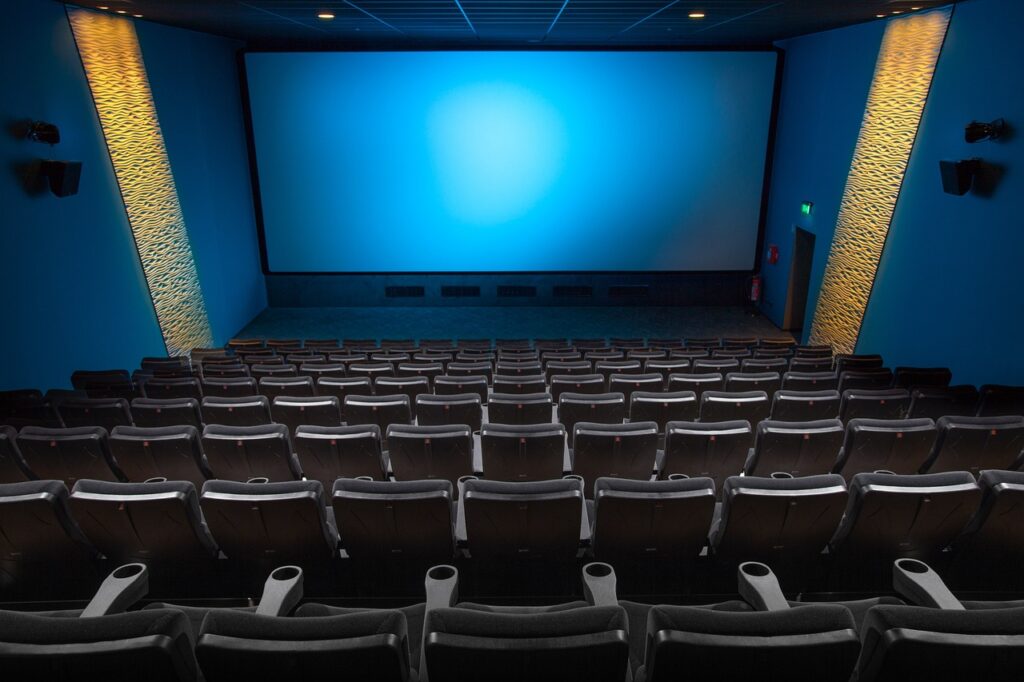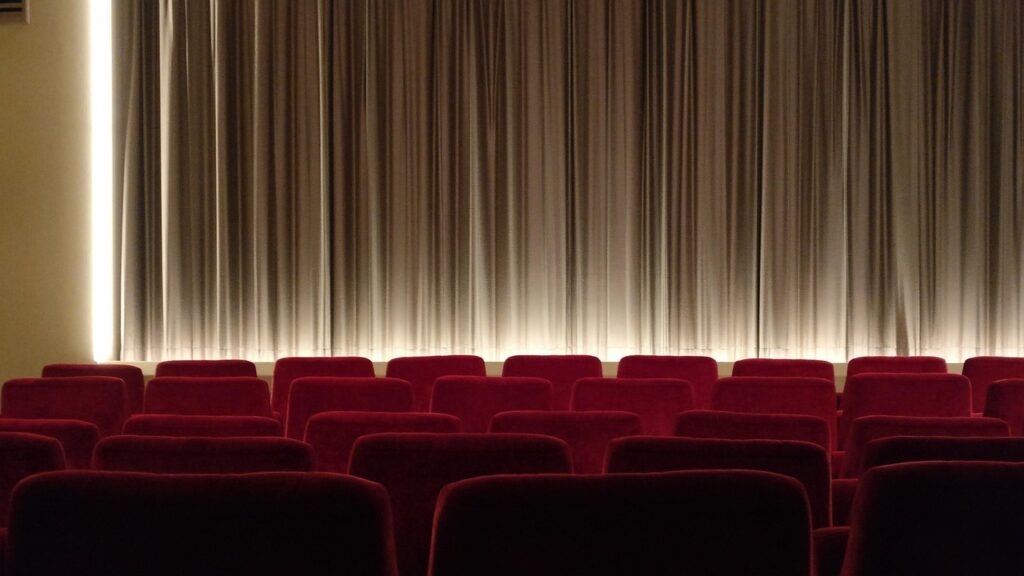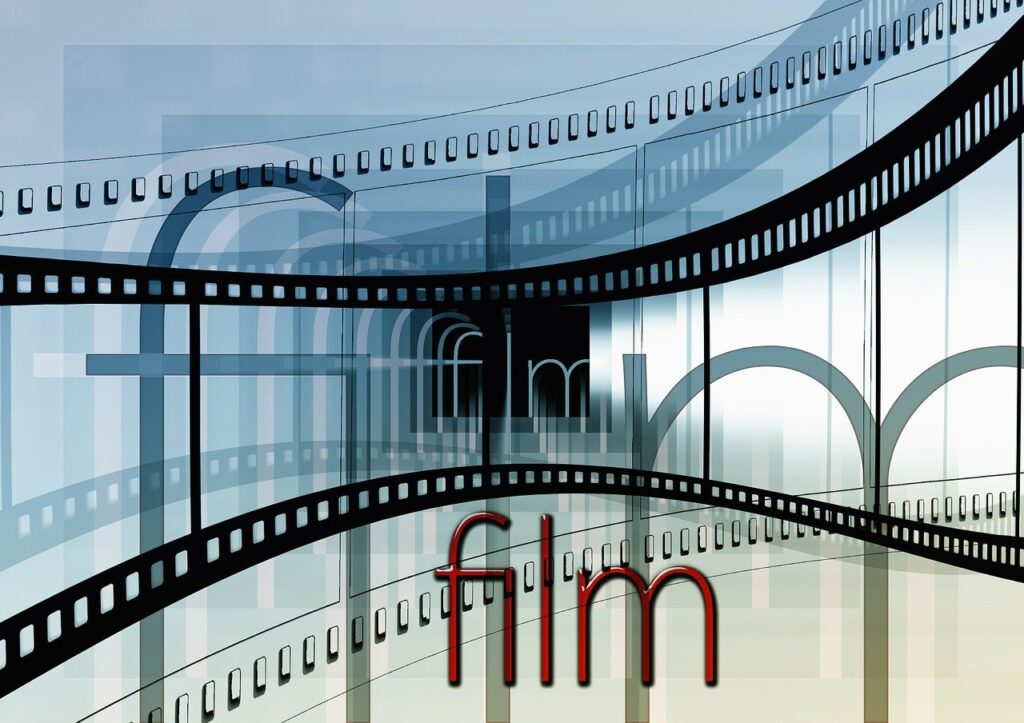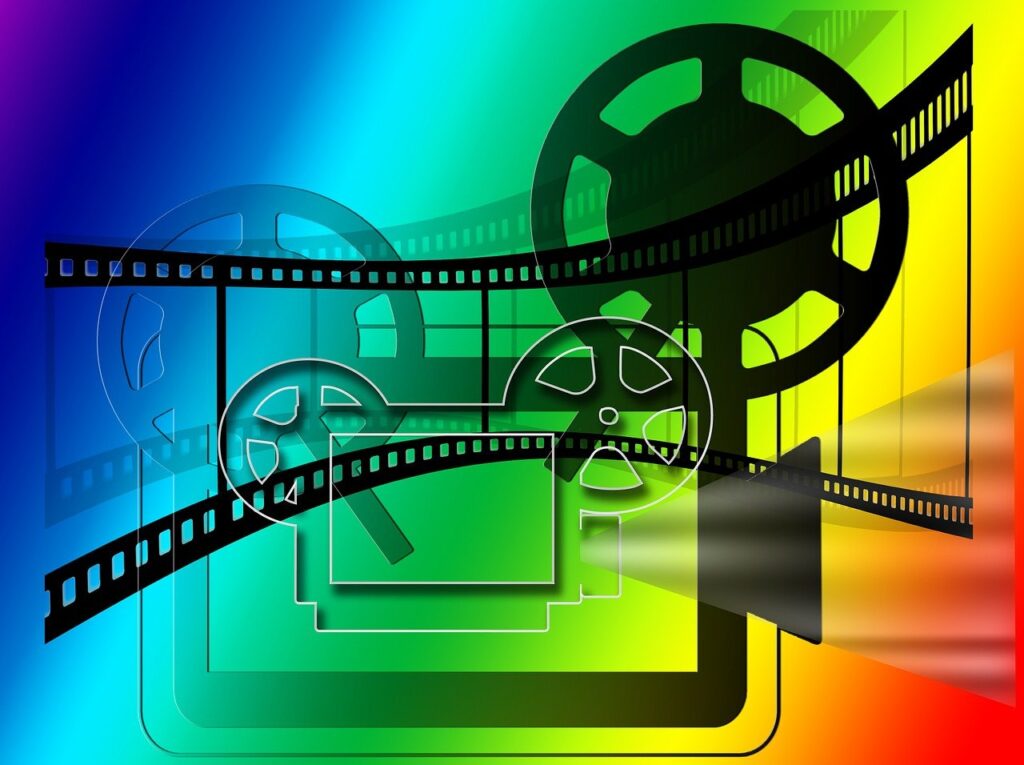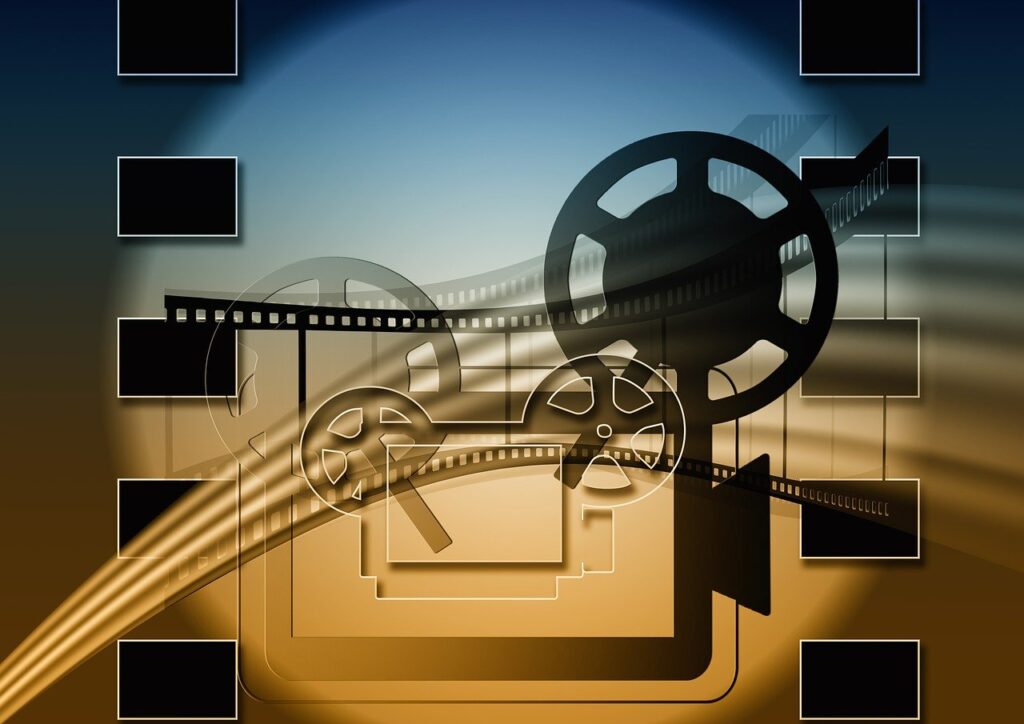The entertainment world has been gripped by a seismic shift, a dynamic struggle often framed as the “Theaters vs. Streaming War.” For years, we’ve debated whether the immersive grandeur of the big screen could withstand the undeniable convenience of on-demand content delivered right to our homes. This isn’t just about watching movies; it’s about a fundamental redefinition of how we consume stories, connect with narratives, and engage with the very culture of film itself. As the dust begins to settle, many are asking: is this a battle for supremacy, or are we witnessing the dawn of a more integrated future?
The rise of streaming services has undeniably reshaped audience behavior, offering vast libraries of content at the touch of a button and fundamentally altering the traditional release windows that once defined the film industry. Yet, despite the pervasive presence of platforms like Netflix, Disney+, and HBO Max, traditional cinemas have refused to fade into obsolescence. Instead, they’ve embarked on a journey of adaptation, innovation, and a reimagining of what the moviegoing experience truly entails, proving that the magic of the big screen still holds a powerful, almost nostalgic, allure for millions. The ongoing battle raises a major question: “can both coexist, or will one eventually dominate the industry?”
Our exploration today delves deep into this evolving landscape, examining the key trends and insights that paint a clearer picture of where the film industry is headed. We will uncover how both streaming and theaters are not just competing, but are increasingly finding ways to coexist and even complement each other, moving towards a hybrid model that promises diverse options for every viewer. This isn’t just about survival; it’s about the ingenious ways an industry adapts to meet the ever-changing demands and desires of a global audience, shaping “the future of film.”
1. **The Transformative Rise of Streaming and Its Initial Impact**The ascendancy of streaming services stands as one of the most significant disruptors in modern entertainment history. Platforms like Netflix, Disney+, and HBO Max have fundamentally altered how millions of viewers consume movies and shows, ushering in an era of unparalleled convenience. The ability to access a vast library of content on demand, from the comfort of one’s own home, has shifted audience behavior dramatically, leading to a notable decline in box office numbers for certain films and sparking initial fears about the future of traditional cinemas. The convenience of watching new releases at home has undeniably “shifted audience behavior and led to a decline in box office numbers for certain films.”
This shift wasn’t merely about content delivery; it was about empowering the viewer with unprecedented control. The convenience of watching new releases at home, choosing flexible viewing times, and having the option to pause, rewind, or fast-forward transformed the passive act of movie-watching into a personalized experience. As the context highlights, “streaming services have become the preferred choice for millions of viewers,” fundamentally changing the expectation of how quickly and easily entertainment should be available. Indeed, the “results suggest that, on the whole, American moviegoers are more likely to stream a film than see it in the theaters, a shifting tide that was only accelerated during the COVID-19 pandemic and its aftermath.”
The initial battle began quietly in the early 2010s, with streaming platforms emerging as alternatives to cable television. However, the COVID-19 pandemic acted as a powerful accelerant, turning a “slow battle into a full-blown war.” With theaters shut down globally in 2020, “studios rushed to release major titles online,” with some films even “bypassing theaters entirely.” This period seemed to solidify streaming’s dominance, making many wonder if traditional cinemas could ever truly recover from such a profound industry upheaval. The landscape had irrevocably changed, exemplified by Netflix’s evolution from a “DVD-by-mail company” to a “giant subscription-based streaming service reaching more than a half a billion people across 190 countries through 50 languages.”
Read more about: The Strategic Imperative: Unpacking the Forces Behind HBO’s Pivotal Channel Shifts and Programming Discontinuations
2. **The Enduring Allure of the Cinematic Experience**Despite the undeniable convenience and pervasive reach of streaming, traditional theaters continue to offer something inherently unique that home entertainment struggles to replicate. The magic of the big screen isn’t just a nostalgic sentiment; it’s a tangible, sensory experience rooted in several key factors that keep cinemas alive and vibrant. As the context eloquently puts it, “Large screens, immersive sound systems, and the social experience of watching a film with a crowd contribute to the magic of the big screen,” creating an atmosphere that resonates deeply with audiences, defying the notion of outright replacement.
One of the most compelling draws remains the “Cinematic experience” itself. Cinemas are designed to provide “high-quality visuals and audio that home setups often cannot match,” enveloping the audience in the narrative in a way that even the largest home TV cannot quite achieve. This sensory engagement is crucial for certain blockbusters and art-house films alike, with many believing that “some movies, such as the blockbuster hit ‘Oppenheimer,’ need to be seen on the big screen” to be fully appreciated. The intended format, including IMAX and 3D presentations, ensures viewers experience films exactly as creators envisioned, creating an “unparalleled immersive experience.”
Beyond the technical superiority, the “Social aspect” of moviegoing is a powerful, irreplaceable element. Watching a film in a theater transforms it into “an event that offers a shared experience with friends, family, or fellow fans.” This communal atmosphere, where “laughter, gasps, and applause contribute to a shared experience that connects viewers,” creates a collective enjoyment that solitary home viewing simply cannot match. It’s a dedicated space, free from home distractions, adding a “ritual of going to the movies—picking a film, buying snacks, and settling into a darkened room—adds a layer of anticipation and excitement that makes the experience more memorable.” This shared cultural moment reinforces the idea that “some in the film industry believe that movies that start in theaters still have more cultural cachet.”
Read more about: Hollywood’s Unfinished Legacies: The Moving Stories of Actors Who Passed Away During Production
3. **Strategic Adaptations: How Theaters Are Innovating for Survival**In the face of intense competition from streaming, theaters have not stood idly by; instead, they have proactively embraced innovation and strategic adaptation to maintain their relevance. Recognizing that convenience alone cannot compete with at-home viewing, cinemas are focusing on enhancing the overall moviegoing experience, transforming a simple outing into a premium event. This aggressive push for reinvention is crucial for survival in a rapidly evolving entertainment landscape, demonstrating a clear commitment to delivering unique value and distinguishing themselves from at-home options.
A significant part of this adaptation involves an “Enhanced Moviegoing Experience.” Theaters are increasingly offering “luxury seating, dine-in services, and special event screenings,” moving beyond basic concessions to create a more immersive and comfortable environment. These upgrades are designed to provide amenities and a level of comfort that “cannot be replicated at home,” offering a compelling reason for audiences to make the trip. By focusing on superior comfort, personalized service, and unique events, theaters aim to elevate the entire experience, making it a treat rather than just a viewing, and thereby fostering a stronger attachment to the physical cinema space.
Furthermore, theaters are implementing “Subscription-Based Movie Passes” to encourage frequent visits and build customer loyalty. Programs like “AMC Stubs A-List and Regal Unlimited” offer “a more affordable way to watch multiple films per month,” effectively making moviegoing more accessible for regular patrons. This strategy mirrors successful loyalty programs in other niche markets, like how a “cannabis seed bank, attract repeat customers by offering exclusive strains and loyalty programs.” These memberships are vital for maintaining a steady stream of customers and fostering long-term engagement, demonstrating an understanding of modern consumer incentives and a proactive approach to audience retention.
“Strategic Studio Partnerships” also play a crucial role in this adaptive strategy. Some studios are now “delaying streaming releases to encourage more people to visit theaters first,” thereby giving cinemas an exclusive window to capitalize on new content. This partnership approach helps build anticipation and drives initial box office revenue before films hit digital platforms. Simultaneously, “smaller venues focus on independent films, classic re-releases, and community-driven events” to carve out their own niches and maintain cultural relevance, appealing to specific demographics and tastes. This multi-pronged approach, encompassing physical upgrades, flexible pricing, and collaborative distribution, underscores the industry’s determined effort to evolve and thrive amidst new challenges.
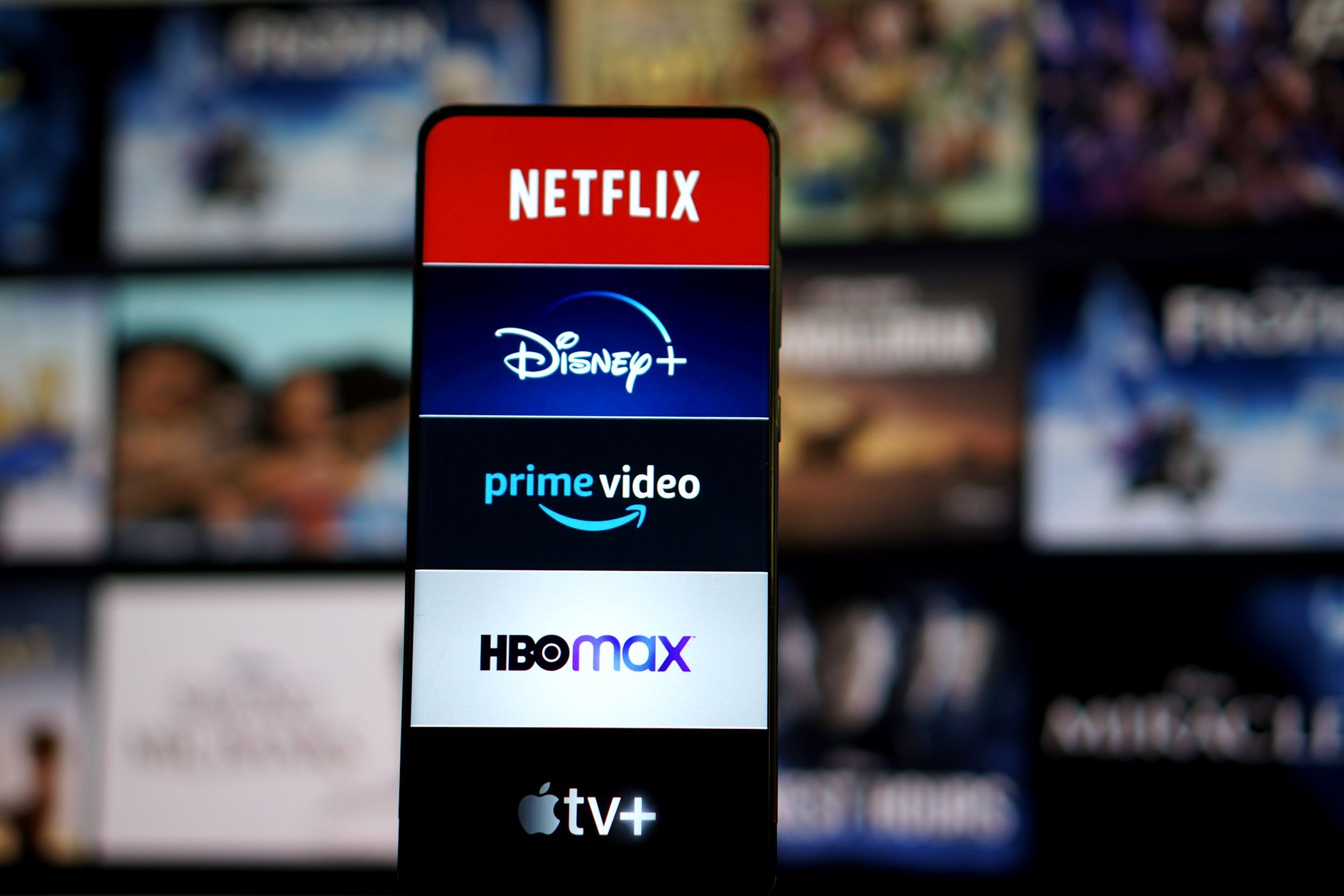
4. **Streaming’s Unintended Benefits for Traditional Cinemas**While often framed as rivals, streaming services are, perhaps surprisingly, presenting some unique challenges that can inadvertently benefit traditional theaters. This nuanced dynamic reveals a more complex relationship than a simple zero-sum game, suggesting that certain aspects of the streaming model are creating opportunities for cinemas to solidify their value proposition. Understanding these paradoxical benefits is key to appreciating the intricate interdependencies within the modern entertainment ecosystem, highlighting that the competition is far from a one-sided affair.
One significant challenge for streaming that theaters can leverage is “subscription fatigue.” As viewers find themselves juggling “multiple services to access their favorite content,” the sheer number of subscriptions required to watch everything desired can become a burden, both financially and logistically. This frustration is compounded by “licensing agreements and content removals” that often disappoint subscribers expecting continuous access to their favorite films. In contrast, theaters offer a clear, one-time purchase for a specific event, free from the ongoing commitment and content flux of subscription models, which can be a refreshing alternative for fatigued consumers seeking a straightforward entertainment option without the long-term mental load.
Moreover, the rise of “Free Ad-Supported Television (FAST)” providers like Tubi, Pluto TV, and Freewee underscores a growing consumer appetite for cost-effective alternatives to traditional subscription models. The context notes that “one in two streamers have ad-supported services, and almost two in three consumers are willing to pay for an ad-supported service if it offers a lower monthly subscription cost.” This trend indicates a strong desire for flexible, budget-friendly options, which aligns with the appeal of a single theater ticket for a premium experience, especially for those wary of accumulating monthly fees. It suggests that if streaming is becoming too complicated or expensive for some, a focused, event-driven theater outing might regain appeal.
Another area where streaming’s challenges indirectly aid theaters is the “growing demand for high-quality new content.” Streaming platforms face immense pressure to “constantly produce fresh material to adjust to consumer trends,” requiring massive and continuous investment in original programming to retain subscribers. Theaters, however, can often “rely on established franchises, major event films, and nostalgic re-releases to draw crowds without the same pressure to constantly create new material.” This allows theaters to capitalize on proven hits and cultural events, reducing the creative and financial strain that streaming services perpetually face, thereby offering a more stable and predictable draw for audiences who crave big-screen spectacles.
5. **The Emergence of a Hybrid Model: Coexistence, Not Conquest**The intensifying debate between streaming services and traditional theaters is increasingly pointing towards a conclusion that defies the initial “war” narrative: a future characterized by a “hybrid model.” This paradigm shift suggests that neither entity is destined to dominate the other entirely; instead, the industry is moving towards a harmonious coexistence where both options not only survive but also complement each other, offering diverse avenues for content consumption. This evolution reflects a growing understanding that different films and different viewing occasions call for distinct experiences, and the market is large enough for both.
This hybrid model implies a flexible approach to content distribution, where “some films will continue to be exclusive to cinemas for a limited time before arriving on streaming, while others may premiere on-demand immediately.” This strategy allows studios to maximize revenue and reach, leveraging the hype and cultural cachet of a theatrical release while also catering to the convenience sought by streaming audiences. The once common “90-day exclusive theatrical window” from 2017 has significantly shrunk, with theaters now “fighting for an industrywide standard of 45 days,” showcasing the flexibility demanded by market dynamics. Examples like “Anora” having a 70-day window, while “Wicked” was available on demand after just 40 days, despite being a box-office hit, illustrate this adaptable strategy.
In this evolving landscape, “Theaters that embrace innovation and enhance the moviegoing experience will likely remain relevant.” Their unique value lies in providing an immersive, communal event that streaming, by its very nature, cannot fully replicate. As the context assures us, “Cinemas face significant challenges, but they are not disappearing anytime soon. As long as audiences seek the immersive experience of the big screen, there will be a demand for cinemas.” This strong statement highlights the irreplaceable cultural role of the theater.
Meanwhile, “streaming platforms will continue to expand their offers, create original content, and form partnerships with studios to distribute major releases,” solidifying their role as accessible content hubs. The future, therefore, is not about one victor, but about a nuanced ecosystem where “balancing the unique strengths of streaming and theaters will shape the cinematic landscape for years to come,” offering audiences unparalleled choice and flexibility. This mutual adaptation fosters a stronger overall entertainment industry, ensuring that diverse viewing preferences are met.
6. **Dissecting Key Differences: From Convenience to Communal Joy**To truly understand the ongoing dialogue between streaming and theaters, it’s essential to dissect their fundamental differences, as these distinctions largely dictate consumer preference and industry strategy. The choice between them isn’t arbitrary; it hinges on personal values, ranging from the desire for immediate comfort to the yearning for a grand, shared experience. Each platform has cultivated a unique appeal, meticulously crafted to cater to divergent audience priorities, reflecting a vibrant diversity in how film is consumed and experienced today.
The most apparent divergence lies in the “Audience Experience.” Streaming champions “convenience and comfort at home,” allowing viewers to craft their personal cinematic environment, replete with personalized snacks, unlimited pauses, and the freedom from external schedules. As Sherry Jenkins, 69, of New Jersey, vividly explains her preference, stating, “My TV is 75 inches, and I’m comfortable. I’m at home,” underscoring the liberating aspect of at-home viewing. Conversely, theaters provide a “communal atmosphere and immersive viewing with larger screens and superior sound systems,” turning a movie into a collective event that transcends individual comfort for a shared thrill that connects viewers emotionally.
“Accessibility” also marks a clear separation. Streaming platforms boast the ability for viewers to “access a vast library of content anytime and anywhere,” removing geographical and temporal barriers. This flexibility is a cornerstone of its appeal, particularly for those with busy lifestyles or for “lower-income Americans” who find streaming “a more accessible option.” In stark contrast, “theaters may have limited showtimes and require travel to specific locations,” necessitating planning and a commitment of time. This trade-off between absolute freedom and structured engagement is a critical consideration for many consumers.
Furthermore, “Content Variety” differentiates the two platforms significantly. “Streaming platforms often feature a diverse range of films, including indie and international titles,” catering to a broader, perhaps more niche, set of tastes that might not find a theatrical release. Conversely, “theaters may focus on major studio releases and blockbusters,” relying on spectacle and widespread appeal to draw large crowds. This distinct focus means that each medium offers a different type of cinematic journey, allowing audiences to choose based on “personal preference for comfort or atmosphere.” The “average cost of a movie ticket in the U.S. is $13.17,” a factor that drives many, like 91-year-old Maryneal Jones, to say, “I just don’t want to pay 12 bucks,” further highlighting how cost influences viewing choices and preferences.

7. **Audience Preferences: Delving into Recent Survey Data**The ongoing debate between theaters and streaming is perhaps best understood through the lens of audience behavior, and recent surveys offer compelling insights into shifting preferences. A new poll from The Associated Press-NORC Center for Public Affairs Research reveals a significant trend: American moviegoers are now more likely to stream a film than see it in theaters. Approximately three-quarters of U.S. adults reported watching a new movie on streaming instead of in a theater at least once in the past year, with nearly 3 in 10 doing so monthly.
Conversely, while about two-thirds of Americans watched a recently released movie in a theater in the past year, only 16% went at least once a month. This data strongly suggests a shifting tide, a phenomenon only accelerated by the COVID-19 pandemic and its aftermath. The primary drivers behind this preference are undeniably convenience and cost, as many people struggle to find the time or justify the escalating price of a movie ticket.
Demographics further illuminate these trends. The AP-NORC poll indicates that streaming is often a more accessible option for lower-income Americans, bridging a gap in moviegoing habits that might otherwise exist. Younger adults, particularly those under 30, exhibit an even stronger inclination towards streaming, with slightly less than half reporting monthly streaming of new releases compared to just 2 in 10 for theater visits. As 18-year-old student Eddie Lin states, he mostly watches movies at home, on various streamers, for all but “bigger things” like “A Minecraft Movie” that offer an interactive audience experience.
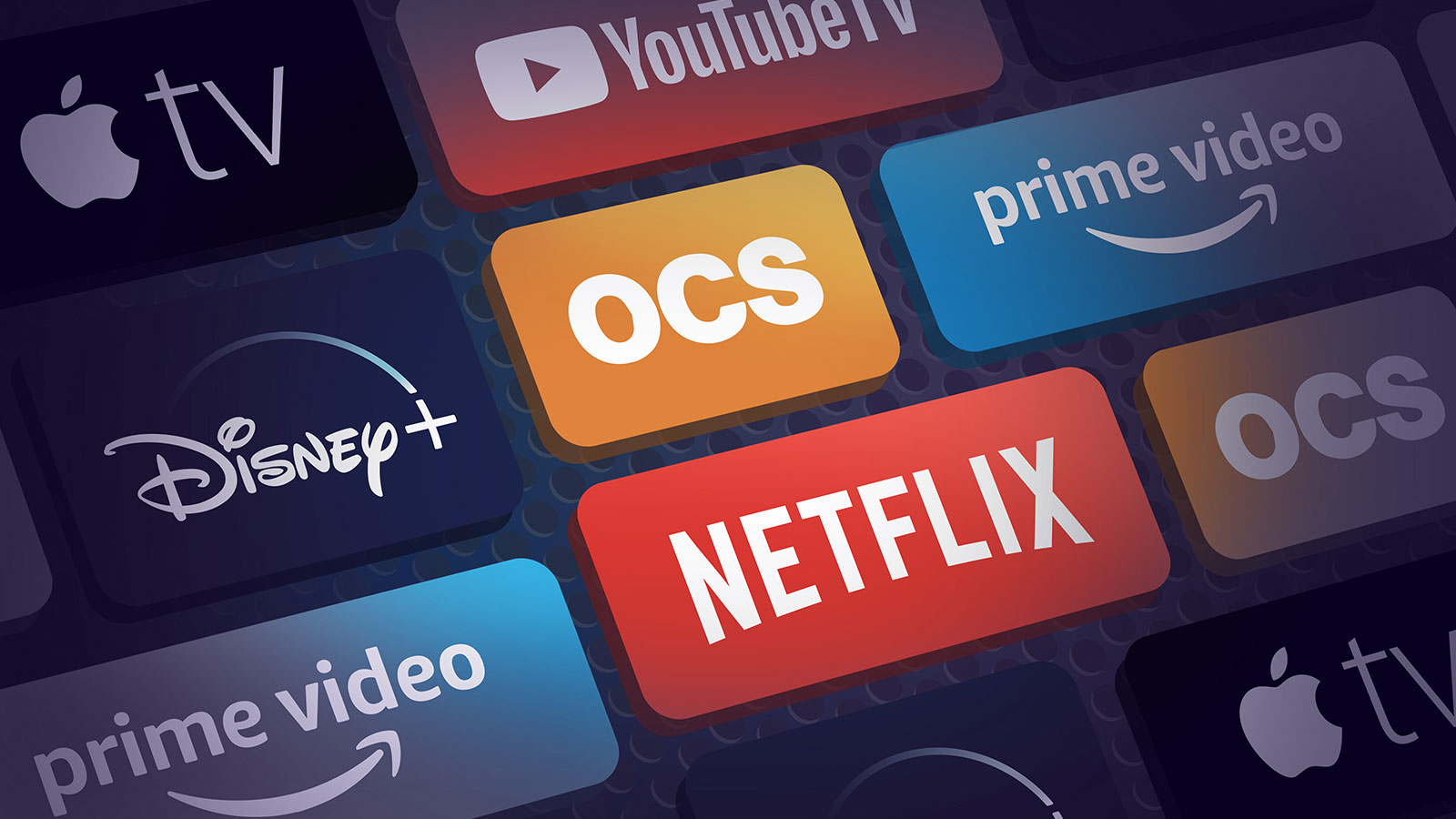
8. **The Streaming-Cinema Connection: A Nuanced Relationship**While the AP-NORC poll highlights a clear preference for streaming, another survey by Roku and the National Research Group (NRG) unveils a more nuanced and complex relationship, suggesting that streaming and cinema are not locked in a zero-sum game but can, in fact, coexist. According to the summary, a remarkable 61% of streaming viewers have attended at least two films in theaters over the past six months, and 74% have been at least once. This data challenges the notion that avid streamers have completely abandoned the big screen, indicating a significant overlap between the two audiences.
Intriguingly, the survey reveals a correlation that might seem counterintuitive: high-frequency streamers, defined as those watching at least 20 hours of streaming content per week, are actually more inclined to visit cinemas monthly (32%) than their low-frequency counterparts (27%). This suggests that a deep passion for consuming film and television content, regardless of the platform, might foster a broader appreciation for cinematic experiences, including those offered by traditional theaters. For these dedicated viewers, streaming doesn’t diminish the allure of the big screen but rather complements it, acting as another avenue for their entertainment engagement.
Despite this apparent synergy, the theater industry still faces significant headwinds. The 2024 box office is reportedly trailing $3 billion behind the previous year, signaling a decline in overall cinema revenue. Furthermore, only 34% of consumers express a preference for seeing new releases in theaters, with the majority willing to wait for digital access. This growing lack of fervent moviegoing interest, coupled with the ambiguity arising from simultaneous film releases in theaters and on streaming, suggests that while streaming might keep some audiences engaged with film, its capacity to sustain the traditional cinema industry in its accustomed form remains a significant concern, pushing the experience towards a “special occasion” rather than a regular outing.
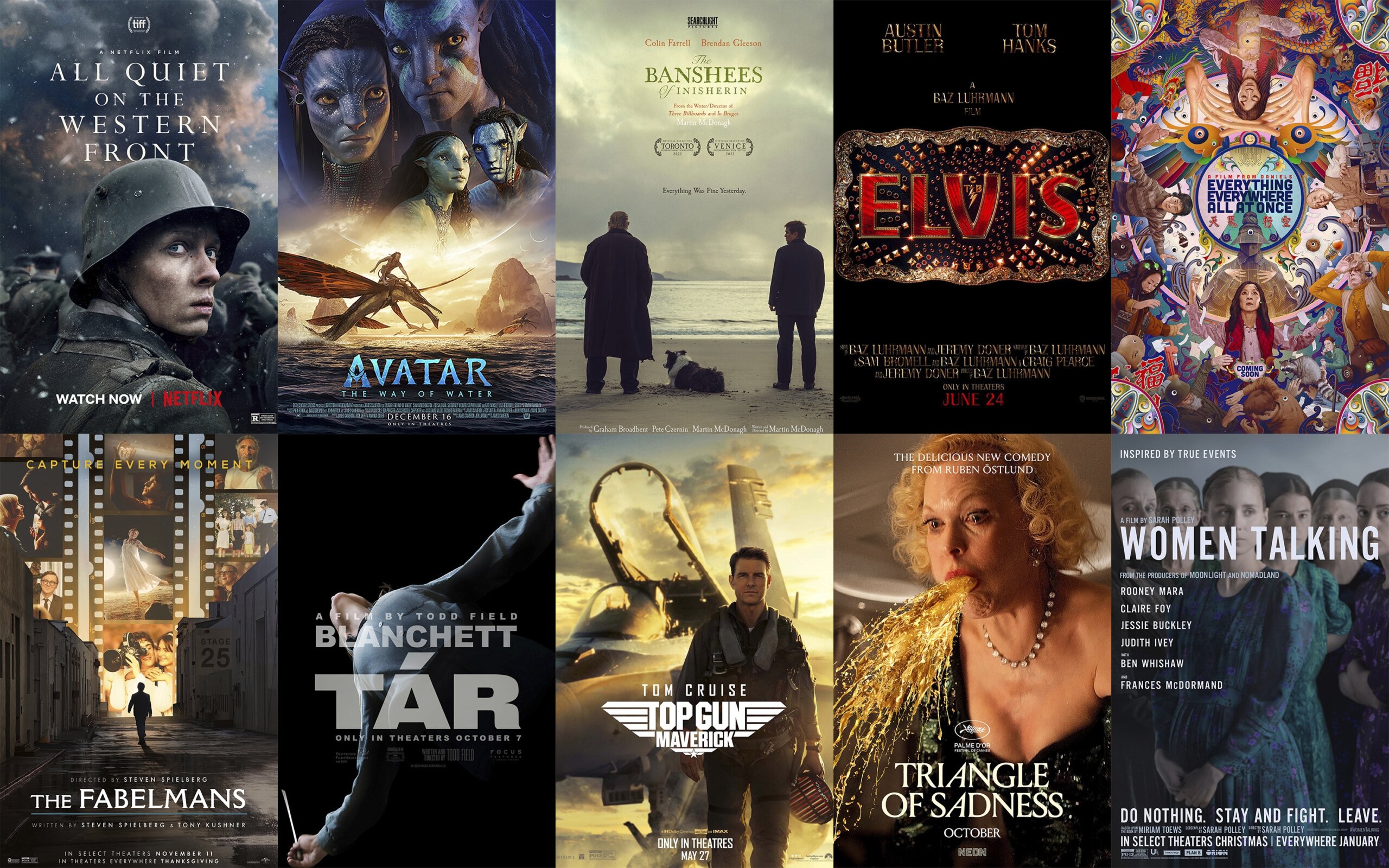
9. **Films That Still Command the Big Screen**Even in an era dominated by home entertainment, a distinct category of films continues to demand the unparalleled canvas of the big screen. The Roku/NRG survey highlighted this sentiment, with 50% of respondents believing that some movies, such as the blockbuster hit “Oppenheimer,” truly “need to be seen on the big screen” to be fully appreciated. This conviction stems from the immersive visual and audio experience that cinemas uniquely provide, qualities that home setups often struggle to match, regardless of their sophistication.
Beyond technical prowess, the social and experiential aspects remain powerful draws. Approximately 46% of respondents view moviegoing as a cherished opportunity for a night out with friends, family, or a date, transforming a film viewing into a communal event. An equal percentage enjoy the simple experience of being in a theater, while 44% see it as a special treat for themselves. This collective enjoyment, where laughter, gasps, and applause are shared, creates a powerful emotional connection to the film and its audience, distinguishing it from solitary home viewing.
For “bigger things” and highly anticipated blockbusters, the theater remains the premier destination. Eddie Lin, the 18-year-old student, exemplifies this, noting that he would go to theaters for films like “A Minecraft Movie” because of the anticipated “interactive audience” and the enhanced experience of being “with, like, a bunch of people.” The rising interest in premium formats like IMAX for films such as “Sinners” or “Oppenheimer” further underscores the enduring value audiences place on spectacle and a truly immersive experience that can only be delivered in a dedicated cinematic environment, ensuring that certain narratives retain their rightful place on the grand stage.
Read more about: The $10 Million Mistake? Unpacking the Hidden Costs and Unforeseen Opportunities in Superhero Cinema’s Biggest Blockbusters

10. **Financial Realities: Box Office Shifts and Revenue Models**The financial landscape of the film industry has been dramatically reshaped by the interplay between streaming and theatrical distribution, revealing complex implications for studios and exhibitors alike. A stark indicator of this shift is the reported decline in box office revenue, with the 2024 figures trailing $3 billion behind those of 2023. This significant deficit directly reflects changing consumer preferences and the ongoing struggle for cinemas to attract audiences consistently, highlighting that while a symbiotic relationship exists, it is far from balanced in terms of traditional revenue streams.
The fundamental revenue models of theaters and streaming services also diverge significantly, influencing how films are produced and marketed. Theatrical releases traditionally rely on robust box office sales for their initial income, generating buzz and cultural cachet that can later translate into ancillary revenues. Streaming services, on the other hand, primarily generate income through subscription fees or, increasingly, ad revenue. This difference impacts everything from content commissioning to distribution strategies, with streaming platforms often featuring a diverse range of films, including indie and international titles, while theaters may concentrate on major studio releases and blockbusters designed for mass appeal.
The evolution of release strategies further illustrates these financial pressures. The once common 90-day exclusive theatrical window has shrunk considerably, with theaters now advocating for an industrywide standard of 45 days. This flexibility is a direct response to market dynamics and the need to maximize revenue across platforms. Examples like “Anora” maintaining a 70-day theatrical window, while “Wicked,” despite being a box-office hit, was available on demand after just 40 days, underscore studios’ adaptable approach. The context also reveals the intricate world of “Pay-1 & SVOD Rate Cards” and licensing terms, showcasing the complex financial negotiations that dictate how films and episodic television are distributed across multiple availability windows worldwide, reflecting a strategic balancing act between immediate theatrical gains and long-term digital profitability.
11. **The Power of Promotion: Streaming as a Marketing Engine for Theaters**Despite the competitive narrative, streaming platforms have emerged as unexpectedly powerful marketing channels for theatrical releases, showcasing a crucial synergy between the two mediums. One of the most compelling pieces of evidence from the Roku/NRG survey is that 44% of moviegoing streamers reported that watching a trailer for a new film on a streaming service would significantly increase their interest in purchasing a ticket. This directly links digital content consumption to a tangible desire for the big-screen experience, proving that streaming is not merely a rival but also a potent promotional tool.
Moreover, the effectiveness of advertising on streaming services is notably high. The survey found that 72% of moviegoing streamers pay more attention to ads they encounter on television (including streaming platforms) than those on social media. This heightened engagement is particularly pronounced among heavy streaming viewers, those watching 20+ hours per week, with 47% stating they “really enjoy” watching trailers for films they are excited about. This dedicated viewership and receptive attitude towards promotional content on streaming platforms can translate directly into increased cinema attendance, especially for films that successfully generate significant buzz through well-placed digital campaigns.
The influence isn’t just one-way; moviegoing culture also significantly impacts streaming behavior, illustrating a dynamic, circular relationship. Major events, such as awards shows, play a critical role in shaping cultural narratives and driving at-home streaming preferences. For instance, following Emma Stone’s Best Actress win at the Academy Awards, searches for “Poor Things” on Roku’s platform surged by 82%, and searches for “Ryan Gosling” saw a 94% spike. These trends unequivocally demonstrate that the cultural significance and impact generated by theatrical releases and related events can directly fuel interest and activity on streaming platforms, creating a vibrant interplay where each medium amplifies the other’s reach and relevance.
12. **The Rise of Free Ad-Supported Television (FAST) and Evolving Viewing Models**As the entertainment landscape continues its rapid evolution, a significant new trend has emerged: Free Ad-Supported Television (FAST) providers like Tubi, Pluto TV, and Freewee. These platforms are gaining massive momentum by offering consumers a compelling and cost-effective alternative to the often-burdensome subscription-based services. This rise speaks volumes about a growing consumer desire for flexible and budget-friendly options, especially as “subscription fatigue” becomes a real problem for viewers juggling multiple paid services.
The appeal of FAST is underscored by striking survey data: one in two streamers currently utilize ad-supported services, and almost two in three consumers express a willingness to pay for an ad-supported service if it offers a lower monthly subscription cost. This widespread acceptance and preference for economically viable viewing options highlight a market shift where consumers are increasingly prioritizing value and accessibility. For many, the ability to access content without an ongoing monthly commitment, even with commercials, presents a refreshing alternative to the ever-increasing cost of entertainment.
FAST viewers are also proving to be highly engaged, with 44% spending three or more hours in a typical streaming session, and many tending to use another device concurrently. This cross-screen engagement provides ample opportunities for brands and content creators to connect with audiences across multiple platforms, further integrating the viewing experience into daily life. This trend signifies a broader movement towards diverse viewing models, where the future of film consumption is not solely defined by premium subscriptions or theatrical releases, but by a flexible ecosystem that caters to a wide spectrum of preferences and economic realities, ensuring entertainment remains accessible to all.
As we navigate the increasingly intricate tapestry of modern entertainment, the narrative of a “Theaters vs. Streaming War” has matured into a more nuanced understanding: one of complex coexistence. While challenges persist, and the financial shifts are undeniable, both cinemas and streaming platforms are adapting, innovating, and, in many surprising ways, complementing each other. The future of film is not about one format triumphing over another, but rather a dynamic, hybrid model that offers unparalleled choice, ensuring that the magic of storytelling continues to thrive, whether on the grand screen or the comfort of home, catering to every mood and moment.

